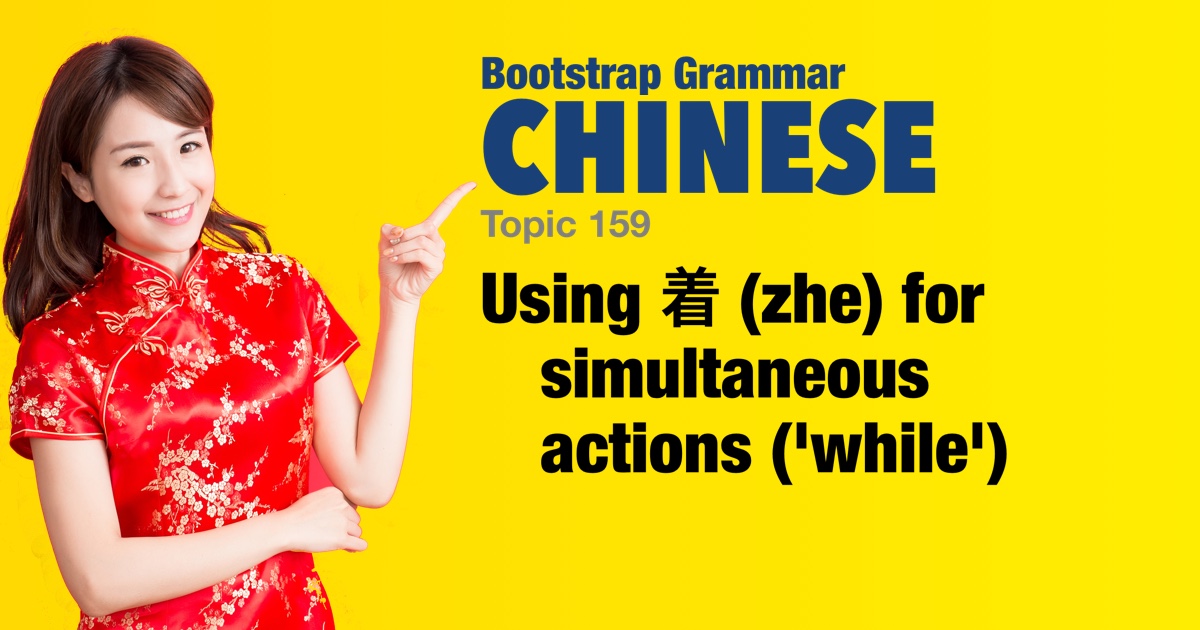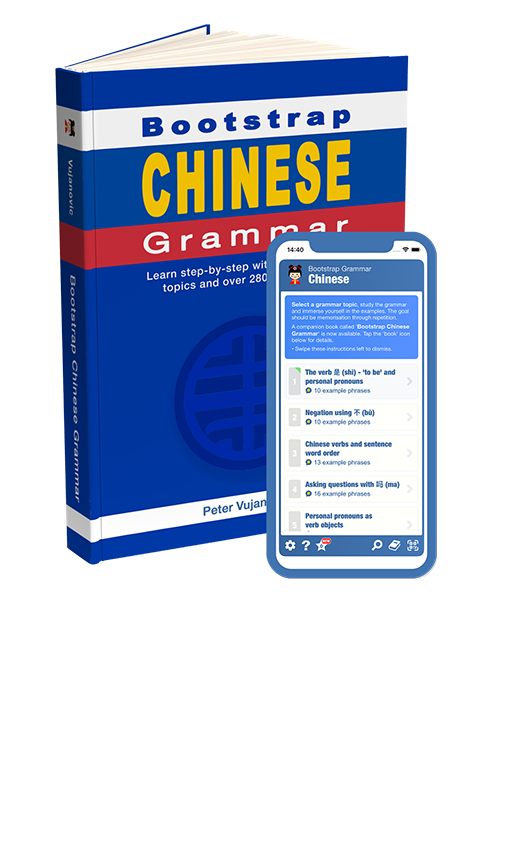Chinese grammar - Using 着 (zhe) for simultaneous actions ('while') |
|||
|
|||
In addition to indicating ongoing or continuous actions, the Chinese particle 着 (zhe) can be used with two verbs acting simultaneously. It emphasizes ongoing simultaneous actions - that is one action is happening concurrently with another. 着 should appear immmediately after the first verb - even if the verb has a direct object. Note that in meaning it is similar to the pattern 一边...一边... (yìbiān...yìbiān...). |
| Examples: | |
|
他笑着说话。
tā xiào zhe shuōhuà. He is smiling while talking. |
|
|
她听着音乐看书。
tā tīng zhe yīnyuè kànshū. She is listening to music while reading.
|
|
|
她听着音乐看一本书。
tā tīng zhe yīnyuè kàn yì běn shū. She is listening to music while reading a book. |
|
|
她看着一本书听音乐。
tā kàn zhe yì běn shū tīng yīnyuè. She is reading a book while listening to music.
|
|
|
老师为什么站着讲课?
lǎoshī wèishéme zhàn zhe jiǎngkè? Why is the teacher standing while lecturing?
|
|
|
我们走着聊天。
wǒmen zǒu zhe liáotiān. We are walking while chatting. |
|
|
他们开着车听音乐。
tāmen kāi zhe chē tīng yīnyuè. They are driving while listening to music. |
|
|
她读着书吃零食。
tā dú zhe shū chī língshí. She is reading a book while eating snacks. |
|
|
她说着话做饭。
tā shuō zhe huà zuòfàn. She is talking while cooking. |
|
|
他玩着手机等人。
tā wán zhe shǒujī děng rén. He is playing with his phone while waiting for someone. |
|
|
我们吃着晚餐看电影。
wǒmen chī zhe wǎncān kàn diànyǐng. We are eating dinner while watching a movie. |
|
|
我们吃着冰淇淋看电影。
wǒmen chī zhe bīngqílín kàn diànyǐng. We are eating ice cream while watching a movie. |
|
 |
|


 Note that
Note that 
